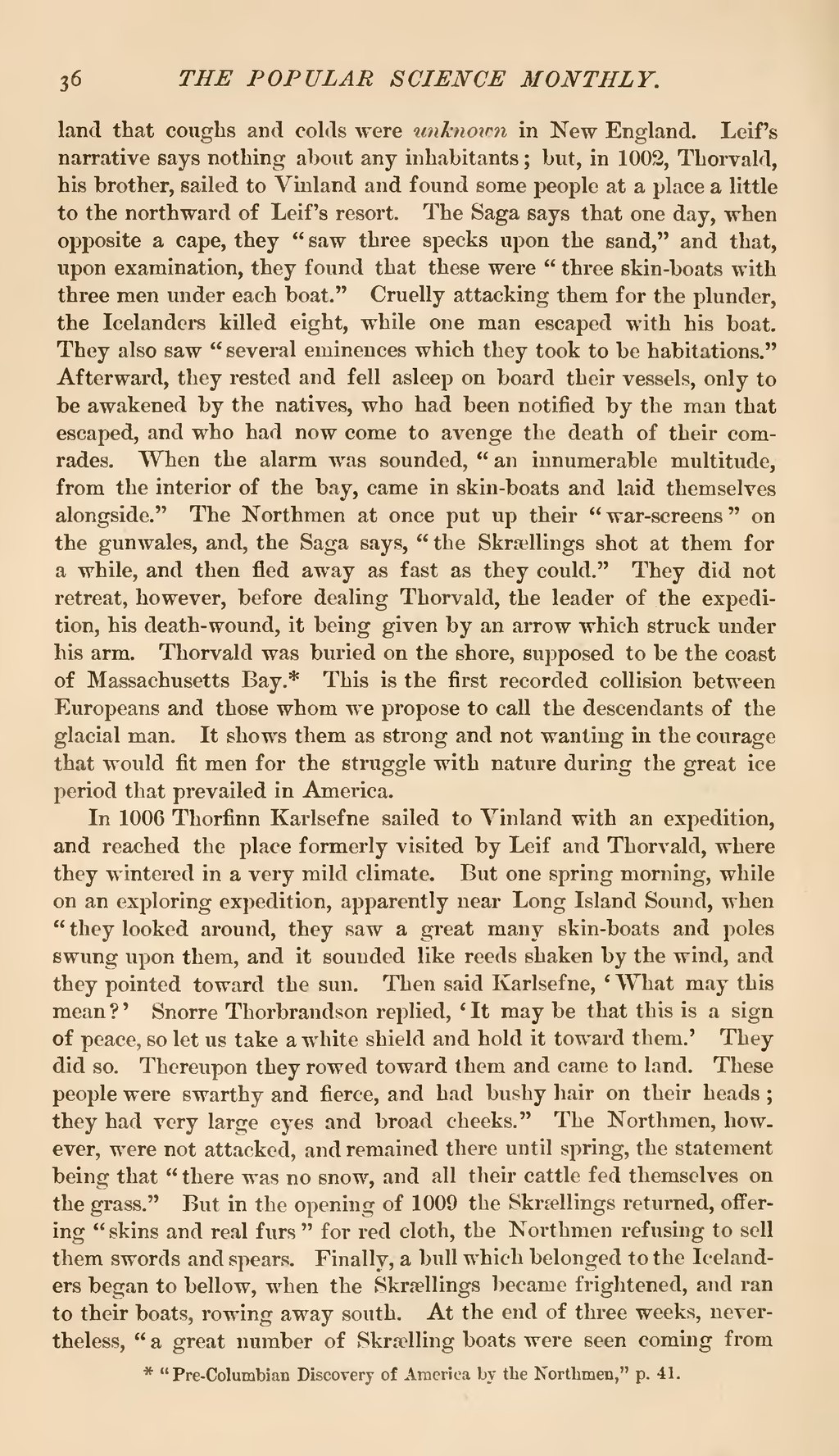land that coughs and colds were unknown in New England. Leif's narrative says nothing about any inhabitants; but, in 1002, Thorvald, his brother, sailed to Vinland and found some people at a place a little to the northward of Leif's resort. The Saga says that one day, when opposite a cape, they "saw three specks upon the sand," and that, upon examination, they found that these were "three skin-boats with three men under each boat." Cruelly attacking them for the plunder, the Icelanders killed eight, while one man escaped with his boat. They also saw "several eminences which they took to be habitations." Afterward, they rested and fell asleep on board their vessels, only to be awakened by the natives, who had been notified by the man that escaped, and who had now come to avenge the death of their comrades. When the alarm was sounded, "an innumerable multitude, from the interior of the bay, came in skin-boats and laid themselves alongside." The Northmen at once put up their "war-screens" on the gunwales, and, the Saga says, "the Skrællings shot at them for a while, and then fled away as fast as they could." They did not retreat, however, before dealing Thorvald, the leader of the expedition, his death-wound, it being given by an arrow which struck under his arm. Thorvald was buried on the shore, supposed to be the coast of Massachusetts Bay.[1] This is the first recorded collision between Europeans and those whom we propose to call the descendants of the glacial man. It shows them as strong and not wanting in the courage that would fit men for the struggle with nature during the great ice period that prevailed in America.
In 1006 Thorfinn Karlsefne sailed to Vinland with an expedition, and reached the place formerly visited by Leif and Thorvald, where they wintered in a very mild climate. But one spring morning, while on an exploring expedition, apparently near Long Island Sound, when "they looked around, they saw a great many skin-boats and poles swung upon them, and it sounded like reeds shaken by the wind, and they pointed toward the sun. Then said Karlsefne, 'What may this mean?' Snorre Thorbrandson replied, 'It may be that this is a sign of peace, so let us take a white shield and hold it toward them.' They did so. Thereupon they rowed toward them and came to land. These people were swarthy and fierce, and had bushy hair on their heads; they had very large eyes and broad cheeks." The Northmen, how. ever, were not attacked, and remained there until spring, the statement being that "there was no snow, and all their cattle fed themselves on the grass." But in the opening of 1009 the Skrællings returned, offering "skins and real furs" for red cloth, the Northmen refusing to sell them swords and spears. Finally, a bull which belonged to the Icelanders began to bellow, when the Skrællings became frightened, and ran to their boats, rowing away south. At the end of three weeks, nevertheless, "a great number of Skrælling boats were seen coming from
- ↑ "Pre-Columbian Discovery of America by the Northmen," p. 41.

